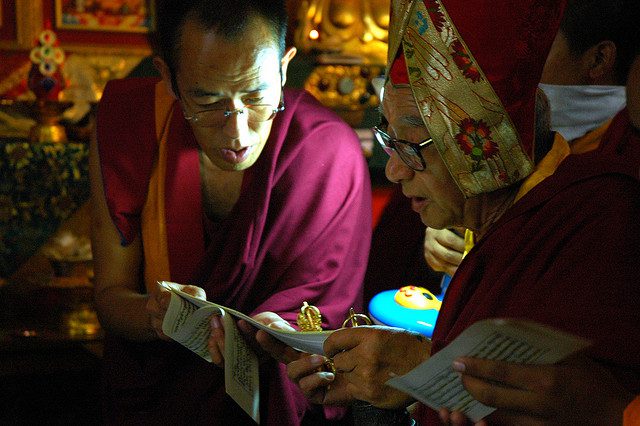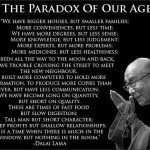Teaching, travels, an upcoming conference, and more exciting things are keeping me too busy at the moment to write everything I’d like to be writing at the moment. But a series about teaching Buddhism has been on my mind since the semester started and I’d like to at least start posting little notes, vignettes of a sort.

This one is called, “The importance of texts and their authenticity in Buddhism.”
Texts
Texts, as preservers of the word of the Buddha, have always been of profound importance to Buddhists. Comments like this have become perhaps controversial in recent years because of three trends. The first of these was 19th and 20th century Europeans who, when encountering Buddhist texts, thought that they represented a true Buddhism to the exclusion of practices, rituals, art, architecture, and everything else developed through the lived tradition.
The second trend was a corrective move, pointing out that this was a mistake, that texts cannot be privileged over and above everything else when trying to understand Buddhism.
The third trend has been a further move to downplay texts and instead say that better sources for Buddhism are to be found in those other sources.
The common-sense response by many scholars has been: how about “both-and?” We can include both in our studies and we can see that both have obviously been important to Buddhists.
The fact that such a huge body of texts was preserved early on tells us something of their importance. Since writing was not available for some time after the death of the Buddha, all of the ‘texts’ had to be memorized. Even when the suttas were first written, apparently in the 1st century CE, this must have been a hugely laborious process, as not only texts, but ink and paper (large, dried leaves) had to be created by hand.
With the introduction of the Mahayana, some texts presented themselves as and became objects of veneration. And of course, as these texts were introduced, there were numbers of monks and nuns who refused to accept them as authentic. So some composers of these texts bent over backwards to make them sound authentic and to justify why they hadn’t been circulated previously. The texts, or perhaps more importantly, the ideas of those texts, were so important that the authors would create incredible stories about how really real the texts were.
Were they lying? Had they hallucinated in deep meditation? I’m not sure. I’m not sure these are even questions worth asking. The point, however, is that new texts were composed and shared and copied; alongside – or instead of – some large and steady (but by no means frozen in time) canon of works. And Buddhists debated and disputed the authenticity of these works.
I would love to fill this in with examples of this process to illustrate the importance of texts throughout the history of Buddhism, but… I haven’t the time right now. So this is a bit of a placeholder post. One case that I’ve just come across in my readings is from Paul Williams’ book Mahayana Buddhism:
The great Japanese Zen Master Dōgen (thirteenth century), in his younger days in China, suspected that the Lengyanjing (Leng-yen Ching), an important sūtra in Zen Buddhism, was not an authentic Indian sūtra, a point now generally accepted by scholars. (p.47)
In any case, texts (and their authenticity) have been immensely important throughout the history of Buddhism. Should our other sources of Buddhism be neglected? No. Are there many Buddhists, perhaps the vast majority historically, for whom texts play very little, if any, role in their lives? Yes. But when Buddhists over the last 200 years, East and West, get fascinated by and caught up in texts, don’t let yourself be convinced that this is just a “modernist” preoccupation, somehow distinct from or cut off of real (traditional) Buddhist fascinations and preoccupations.












